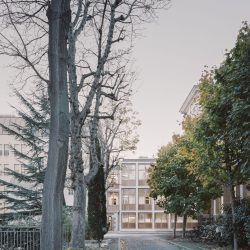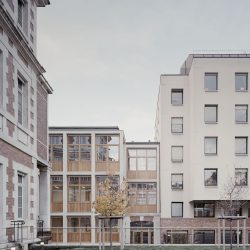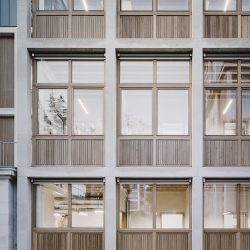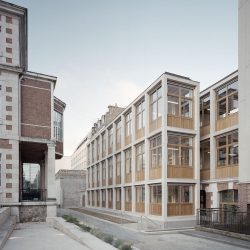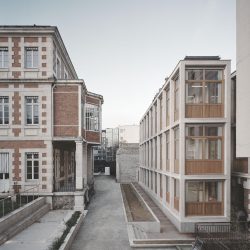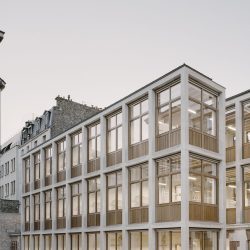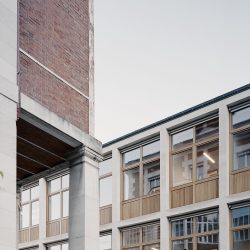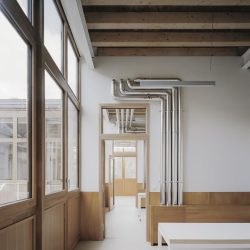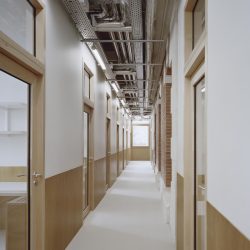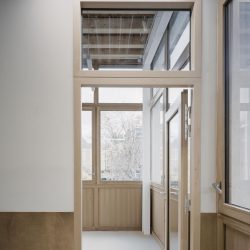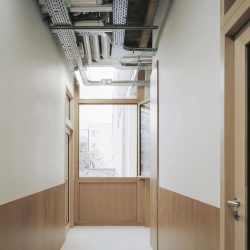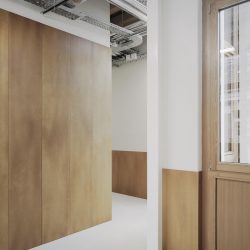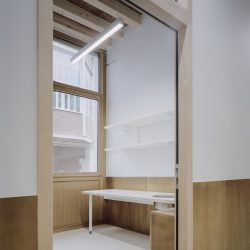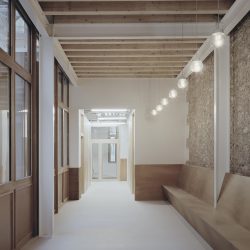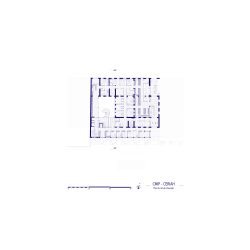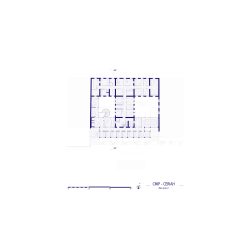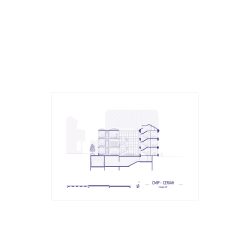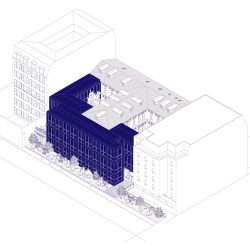
JAQ . photos: © Aldo Amoretti
This project takes place in the 15e arrondissement in Paris. In a very dense tissue, it’s create place for new spaces dedicated to medicine and experimentation.
This extension reinterprets the construction codes that face it to offer spaces beyond the standards. The height of the storey is undoubtedly the most striking example: attached to a building with 4m of height under the slab, the new building benefits from exceptional dimensions and offers offices of 7m2 with more than 4m under ceiling. The extension project presents setbacks, steps or recessed joints inside and outside and shows the existing and highlights the percussions between old and new. The project also engages a dialogue with the stone building listed as a historical monument which it faces, thanks to a similar self-supporting structure in solid Burgundy stone. The constraint of an occupied site also influences the construction system. A metal structure with wooden joist floors was chosen, so as to have a maximum of dry construction and rapid execution. The ambition to adapt to the constraints guides the project, allows it to free itself from the standards and to offer a remarkable quality of use.
The inevitable obsolescence of a research program involves anticipating the reversibility of the building. The whole technique is therefore left visible to facilitate daily maintenance but also future changes. In addition, jaq designs and draws the smallest detail left visible (bends, cable trays, HVAC, etc.) so that it contributes to spatial quality beyond technical needs. The combination of refinement with performance and quality of use can be found even in the woodworking: non-butted wooden joinery, exterior spandrels in grooved wood, interior bases in varnished beech plywood to protect against shocks, or even made-to-measure benches of rare elegance.
Defined as essential qualities for programs that are all too often blind, light and transparency are key in the project. The offices are largely glazed, sometimes even in double or triple orientation, the corridors are lit naturally and in the second day through glass doors, and the collective spaces overlook a patio.
_

